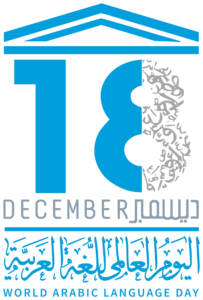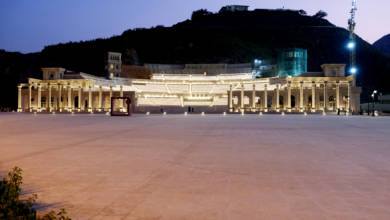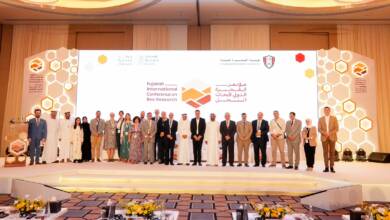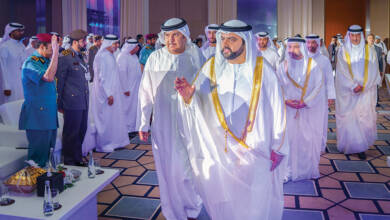Arabic Language Day celebrated
 Arabic Language Day celebrated: Arabic is a fascinating language. It is surprising that it remains one of the most magnetic and yet unknown languages. Though the secrets of Arabic may be still uncovered for many, it is one of the five most spoken languages in the world, with almost 700 million speakers. Arabic is an official language in more than 22 countries. Countries such as Saudi Arabia, Morocco, Egypt, Jordan, Algeria, Tunisia… and the list goes on and on.
Arabic Language Day celebrated: Arabic is a fascinating language. It is surprising that it remains one of the most magnetic and yet unknown languages. Though the secrets of Arabic may be still uncovered for many, it is one of the five most spoken languages in the world, with almost 700 million speakers. Arabic is an official language in more than 22 countries. Countries such as Saudi Arabia, Morocco, Egypt, Jordan, Algeria, Tunisia… and the list goes on and on.
Imagine then how broad, vast, and diverse is the Arabic language, as well as the cultures that use Arabic as their way of conveying their thoughts and lifestyle.
Thinking of learning Arabic?
Here are some reasons that, if you haven’t thought of learning Arabic, that may make you want to:
Around 422 million people speak Arabic daily. It ranks as the 5th most spoken language in the whole world after Mandarin, Spanish, English, and Hindi! You can understand why Arabic Language Day is celebrated!
Many of the most popular languages in the world have been influenced by Arabic. For example, English, Spanish, Indonesian, French, Persian, Urdu, Kurdish, Bengali, Hindu, Malay, Tagalog, Portuguese and Turkish.
The Maltese language is considered a branch of Arabic and is also the only Arabic dialect written in the Latin alphabet!
Arabic Alphabet
While it’s true that classical Arabic only dates back to the 6th century, the Arabic language is, in fact, at least 1,500 years old. Older versions of the language and dialects exist. This is before the emergence of Islam dating as far back as the 2nd century BCE when the Nabataeans lived in what is known as Jordan today. They wrote a cursive Aramaic which developed into the Arabic alphabet.
The Arabic language has an “abjad” system and not an alphabet. The Arabic abjad is made up of 28 letters, written from right to left. And the reason behind it is ancient. In a time when people used to carve planks to write, they used the hammer with their right hand and the chisel with their left one. This was a much easier way to carve from right to left. All letters are consonants since diacritics denotes the vowels in Arabic. These are marks that can be added either on top or underneath the letters.
Each Arabic alphabet letter can be written in four different ways when writing a word. Either stand-alone or isolated, when it is at the beginning, in the middle, or at the end of the word.
The Arabic alphabet includes letters or sounds that other languages do not have. For example, you have Haa, Kha, Ayn, Ghain, Dad, Haa, Saa, Taa, Thaa, Qaf, and some unique sounds like the rolled “r” which is similar to Spanish r. Then there’s also the raspy Kh, the gargling GH, and the glottal stop “ayn” which doesn’t have an equivalent in English.
Arabic is thought to have the biggest lexicon
It is quite a hard task to calculate the number of words each language has due to the difference amongst dictionaries, Arabic is thought to be the language with the richest vocabulary. To get an idea of how rich the Arabic lexicon is – there are at least 11 words for ‘love’ and hundreds of words for ‘camel’
Arabic alphabet in other languages
Apart from Arabic, there are more than 10 non-Arabic languages that use the Arabic alphabet such as Persian, Urdu, Malaysian, Kurdish, Ottoman, etc.
Arabic Language DayEnglish has many words of Arabic origin
English has many words acquired either directly from Arabic or indirectly from Arabic words that have entered into Romance languages before passing into English. Examples include racquet, alchemy, alcohol, algebra, algorithm, alkaline, (the article ‘al’ in Arabic denotes ‘the’), amber, arsenal, candy, coffee, cotton, ghoul, hazard, lemon, loofah, magazine, sherbet, sofa, tariff – and many more.
The algebraic letter ‘x’ which represents an unknown number, originates from the Arabic word ‘shay’ (thing), which eventually became translated to ‘xay’ in Spain, leading to its final abbreviation and use in algebra as ‘x’.
Even the number system used today was introduced to Europeans by Arab merchants.7.You read as you write
Something that makes easier the learning of Arabic: Arabic is read as it is written. Something shared with languages such as Spanish, as opposed to languages such as English or French. So we can all celebrate Arabic Language Day.





